Liam Young on ‘Views of Planet City,’ Getty PST, and the Power of Speculative Worlds
Earlier this summer, it was announced by the Getty Foundation that SCI-Arc is one of 45 cultural and educational institutions in Southern California awarded an exhibition research grant to prepare for the next iteration of the Getty Foundation’s Pacific Standard Time art exhibition.
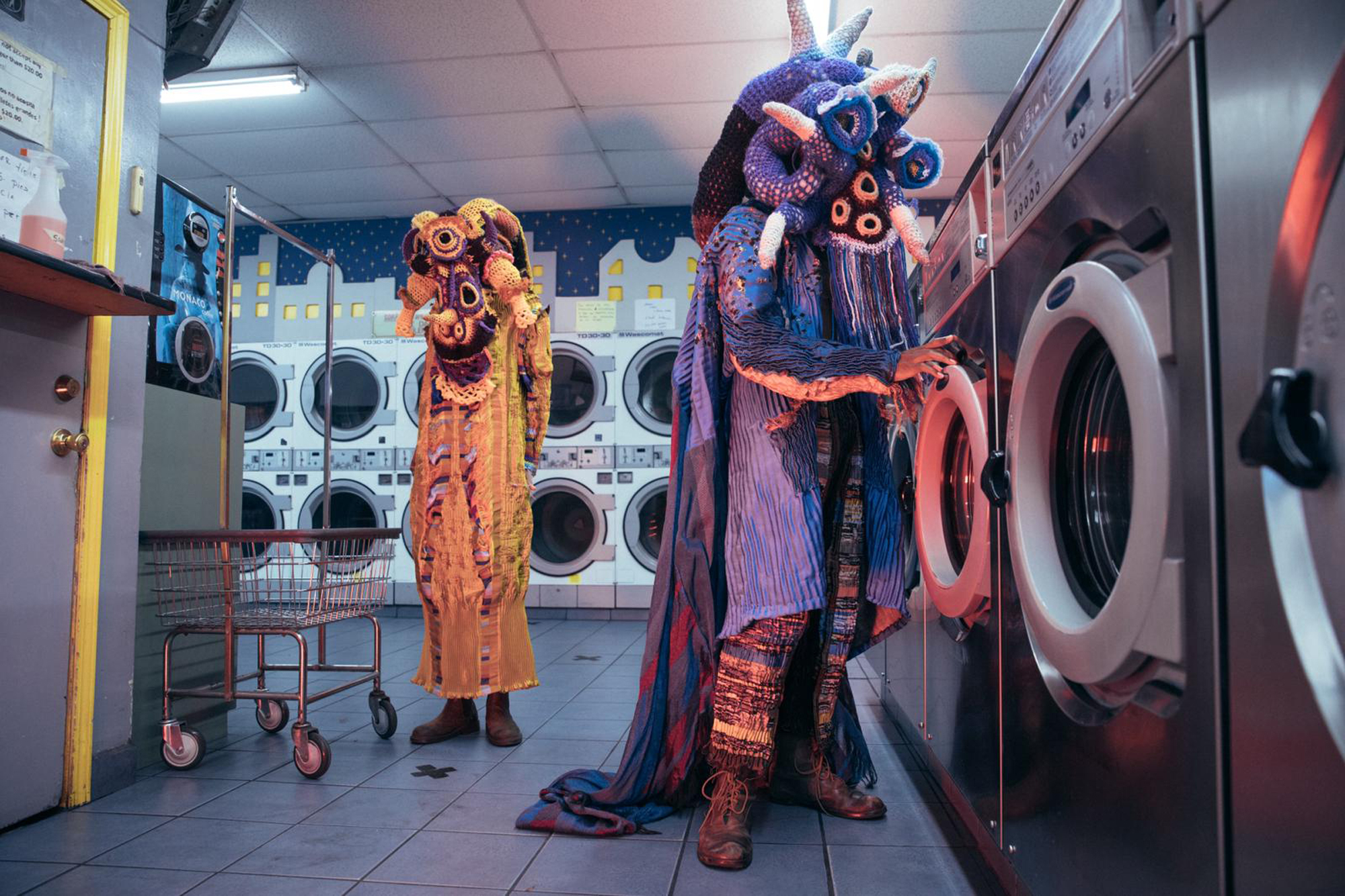
SCI-Arc’s project, Views of Planet City, is based on lead curator and coordinator of the MS in Fiction and Entertainment program Liam Young’s film Planet City, which explores the implications of Edward O. Wilson’s “Half-Earth” proposition: in order to preserve the planet’s biodiversity and ensure the survival of life on Earth, humanity must reserve at least 50% of the planet’s land and marine areas for protection and remove them from any human use. Planet City models the scenario of the world’s entire human population retreating into a single megalopolis: a project for the next phase of civilization that allows the rest of Earth to revert to a global-scaled wilderness.
Views of Planet City consists of five interrelated projects—by Young and fellow SCI-Arc faculty Angelica Lorenzi, John Cooper, Jennifer Chen, and Damjan Jovanovic—that critically and imaginatively explore the implications of this wildly speculative but somewhat plausible premise, intended to challenge dystopian visions of the future and offer an immersive, interactive experience of a possible blueprint for a sustainably urbanized planet.
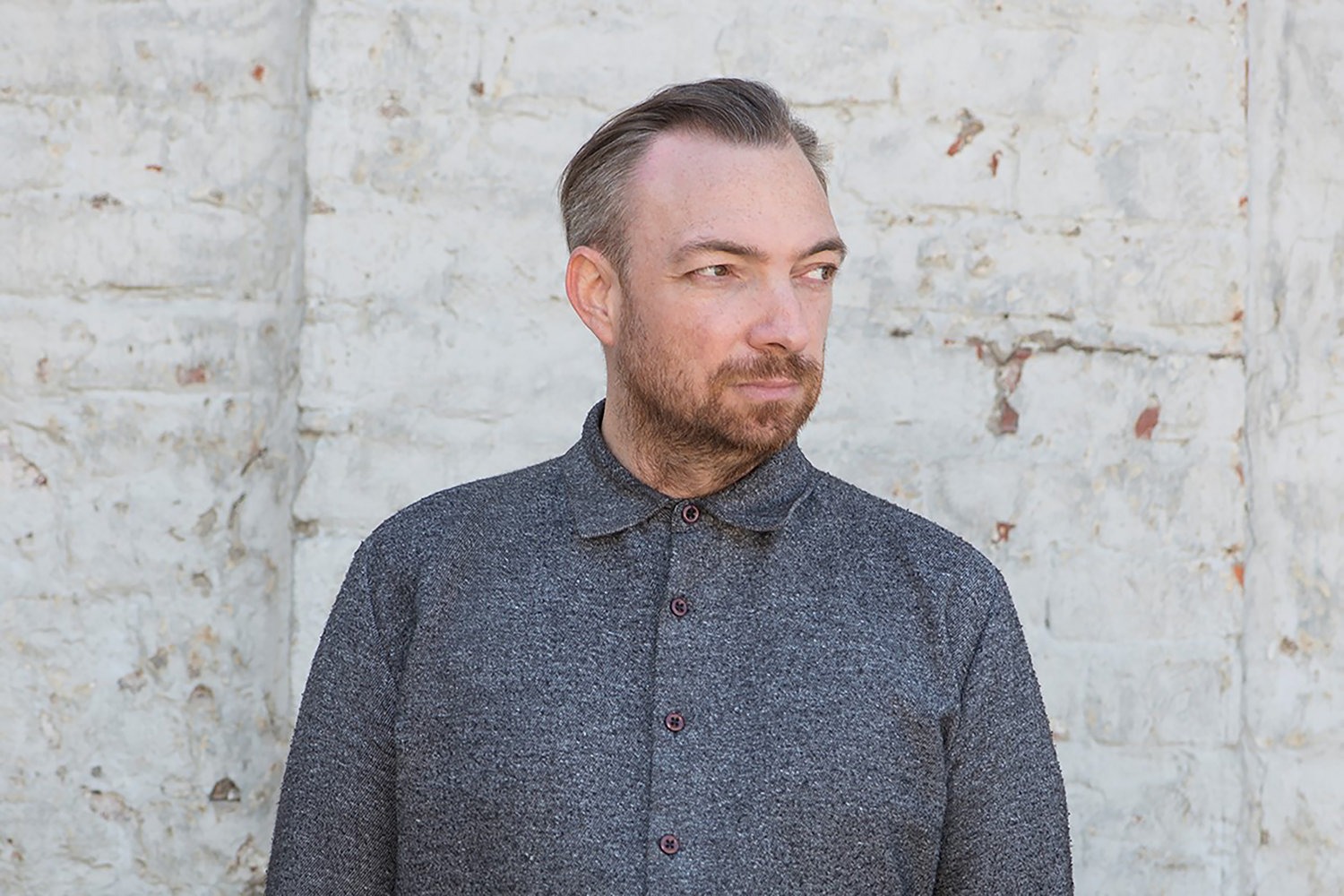
We spoke to Young about Views of Planet City, his vision for Getty PST, and how speculative fiction can both shape public discourse in design and provide a healing mechanism for a planet in peril.
Hi Liam! Thank you for speaking with us. Can you talk about how your original impetus for this project—EO Wilson’s Half Earth proposition—led to your development of Planet City?
Five years ago, seminal biologist Edward O. Wilson proposed a new world he called “Half Earth,” a plan to stave off mass extinction by devoting half the surface of the earth completely to nature and consolidating human development to the half that remains—this is where the speculation of Planet City begins. But as we started to design and visualize this radical reversal of our planetary sprawl we soon realized that we could actually go much further. In its most provocative form, if we were to reorganize our world at the intensity of the densest cities that currently exist then Planet City could actually occupy as little as .02 percent of earth. We wanted to explore this thought experiment, to imagine coming to a global consensus to retreat from our vast network of existing cities into this one hyper-dense metropolis.
Our imaginary city would allow us to surrender the rest of the globe to nature, to return stolen lands and rewild in our wake. A new national park of the world, to be visited and tended rather than engineered for extraction. The invisible lines that once divided us would fade beneath a planet of trees.
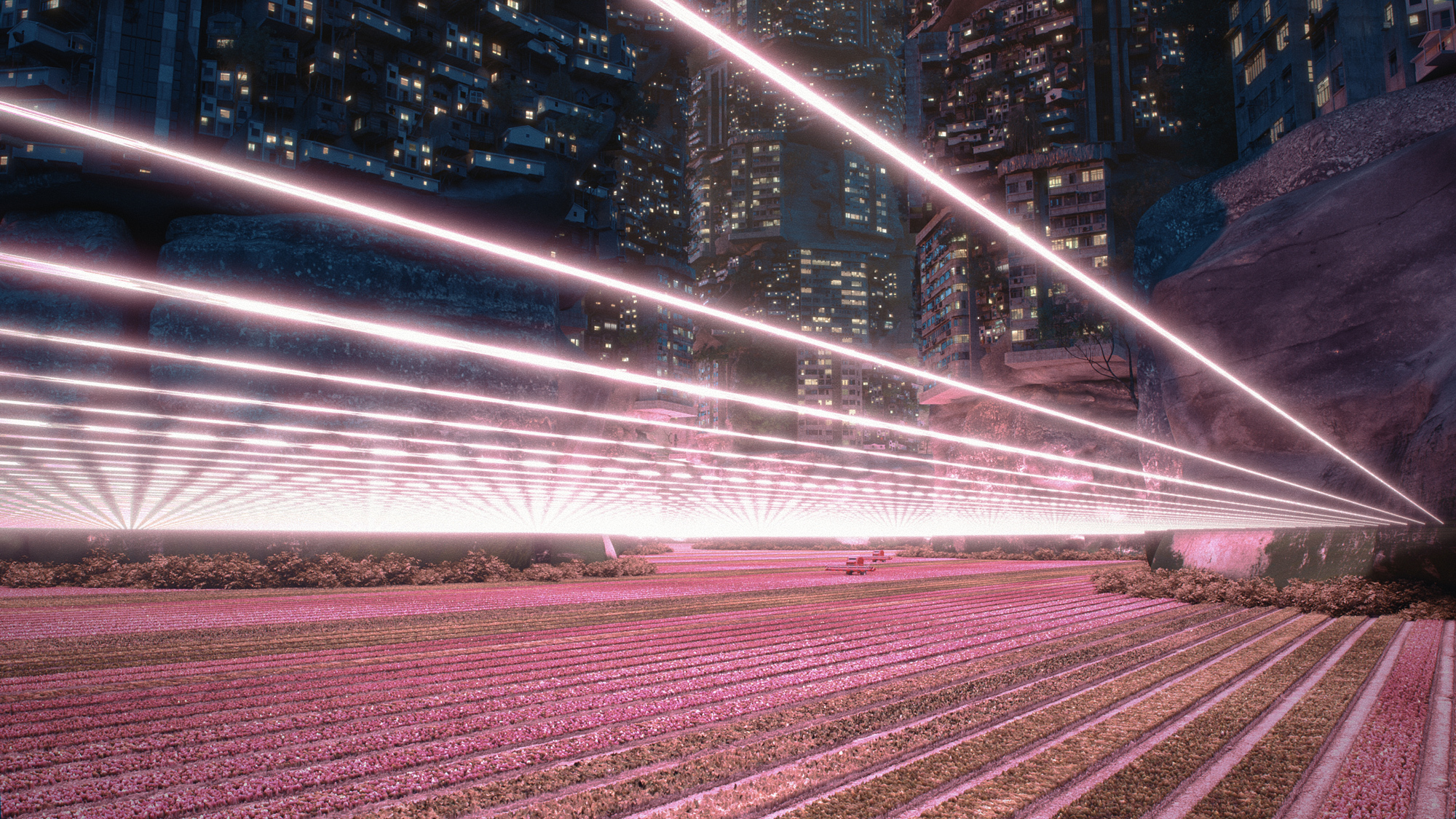
How has your understanding of the power of imaginary worlds grown throughout the process of making Planet City?
As I have shifted my studio from London to Los Angeles I have moved deeper into the design of environments for the film and television industry. I believe that by creating fictional worlds we can connect emotionally to the ideas and challenges of our future. We have been creating Planet City in response to the rising red line on the graph of climate change but worldbuilding and storytelling can do much more than just visualize this data it can dramatize data.
In speculative cities such as Planet City we can immerse ourselves in the various consequences of the decisions we face today. They can be both cautionary tales and roadmaps to an aspirational future. In the streets of Planet City, we can prototype some of the necessary lifestyle changes that will be required for us to continue to sustain human life on this planet.
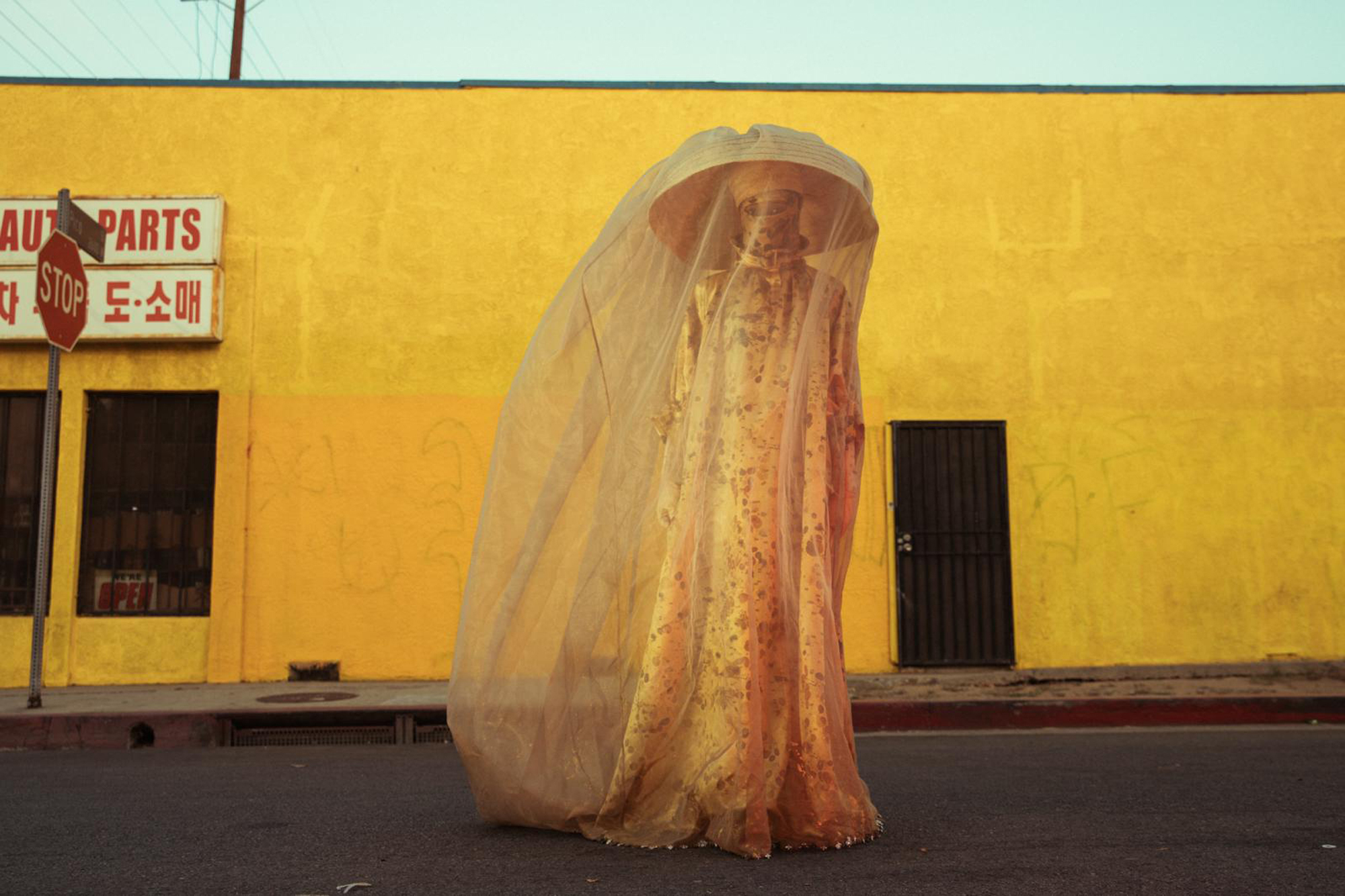
Planet City in the end is not a proposal; it is a provocation, a thought experiment, that shows us that we don’t have to trample so hard across the earth. If we can imagine these systems working at the scale of 10 billion, then the only thing standing in the way of rewiring and consolidating our existing cities is ourselves, our own biases, blind spots, politics, and prejudices.
In many ways, each one of us has been living in a planetary city all along. We have urbanized the planet from the scale of the cell to the tectonic plate. Planet City is both entirely imaginary and already here. Simultaneously a challenging image of a possible tomorrow and an urgent illumination of the environmental challenges that are facing us today.
What will the iteration of Planet City that you’ll be making for the Getty PST exhibition in 2022 look like? How will it have changed from the original film?
To further design the systems of Planet City the Getty grant will support us to travel to, research, and film the mega scaled renewable energy and agriculture sites that already exist around the world today: the world’s largest thermal solar plant, the tallest vertical farm, the most productive wind energy network, the world’s largest algae farm, and so on. These monumental infrastructures are evidence that much of the technologies required to regenerate our climate are actually already here.
We will be collaborating with a larger network of scientists and technologists, to imagine what would happen if we just remove the political roadblocks or lack of cultural investment that currently holds them back and visualize how they could operate at global scales—not out on an industrial periphery, but woven through the fabric of the city itself.
Although wildly speculative, grounding imaginary worlds such as Planet City in the real science and technology of the present moment means we can begin to project ourselves into this future.
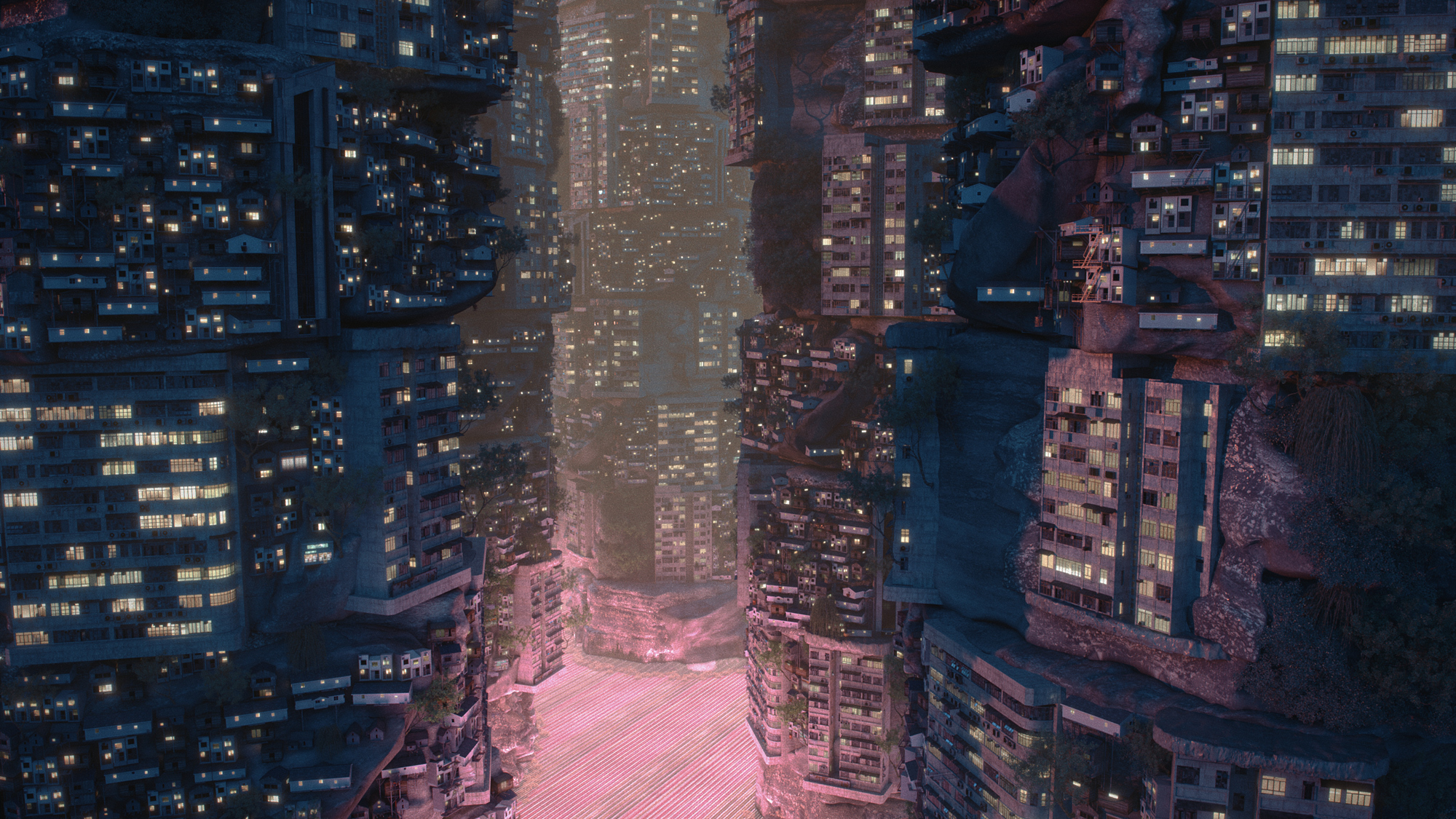
You’ll be collaborating with four fellow SCI-Arc faculty (Angelica Lorenzi, Damjan Jovanovic, John Cooper, and Jennifer Chen). Can you tell us anything about how those collaborations will be taking shape?
Planet City has always been a collaborative work of multiple voices and cultures supported by an international team of acclaimed environmental scientists, theorists, and advisors. It is exciting to involve more partners from SCI Arc faculty in the project. By definition, a city is a condition of multiple authors so each of the faculty will be taking their own position on the Planet City thought experiment. Each of their projects will come together to create a more nuanced portrait of different aspects of the city including how it is seen from space, how the fabric of the city grows across time, the politics that underpin the city community, and the systems of rewilding that will take place outside of the city boundary.
How do you see the shifting landscape of your work within the context of the ever-changing, ever-worsening global climate crisis?
Planet City is a not a plan for direct implementation, but rather serves as a grounded provocation that prototypes the necessary systemic and lifestyle changes that may be required for our world to continue to support human life. It affords us this critical distance from which to reevaluate ourselves and helps us to see that ‘normal’ is the actual problem. What comes into focus are not the extremes of this fictional city but the catastrophic models of everyday urbanism. The live-action dystopian film we all occupy in the present moment is just as fantastic, implausible, and incalculable as any science fiction imagining. Projects like Planet City hope to contribute to a necessary collective conversation about the futures we want to all be a part of us. It is a call to arms, a hope that we all will keep making stories and building worlds that become vessels for critical ideas—Trojan horses hidden within the mediums of popular culture.
Planet City presents the idea that we need to radically embrace the uncomfortable place we now occupy in a world where we can no longer be at its center. At present, we chart territory for the extraction of wealth and the fulfillment of our own desires. But Planet City imagines that the rest of the globe outside of its walls are defined specifically in order for us to leave it empty.
The beginnings of Planet City are the necessary end of human-centered design and the foregrounding of action for non-human species and the development of positions such as ‘wetlands-centered design,’ ‘atmosphere-centered design,’ or ‘whooping crane-centered design.’ In this way the project is based on the assumption that climate change is no longer a technological problem, but rather an ideological one, rooted in culture and politics. Any plan to address environmental disaster may engage us in this cultural shift not feed us just one more naïve, simplified technological solution. The front line of the climate change fight is now an economic, political, and culture battle.
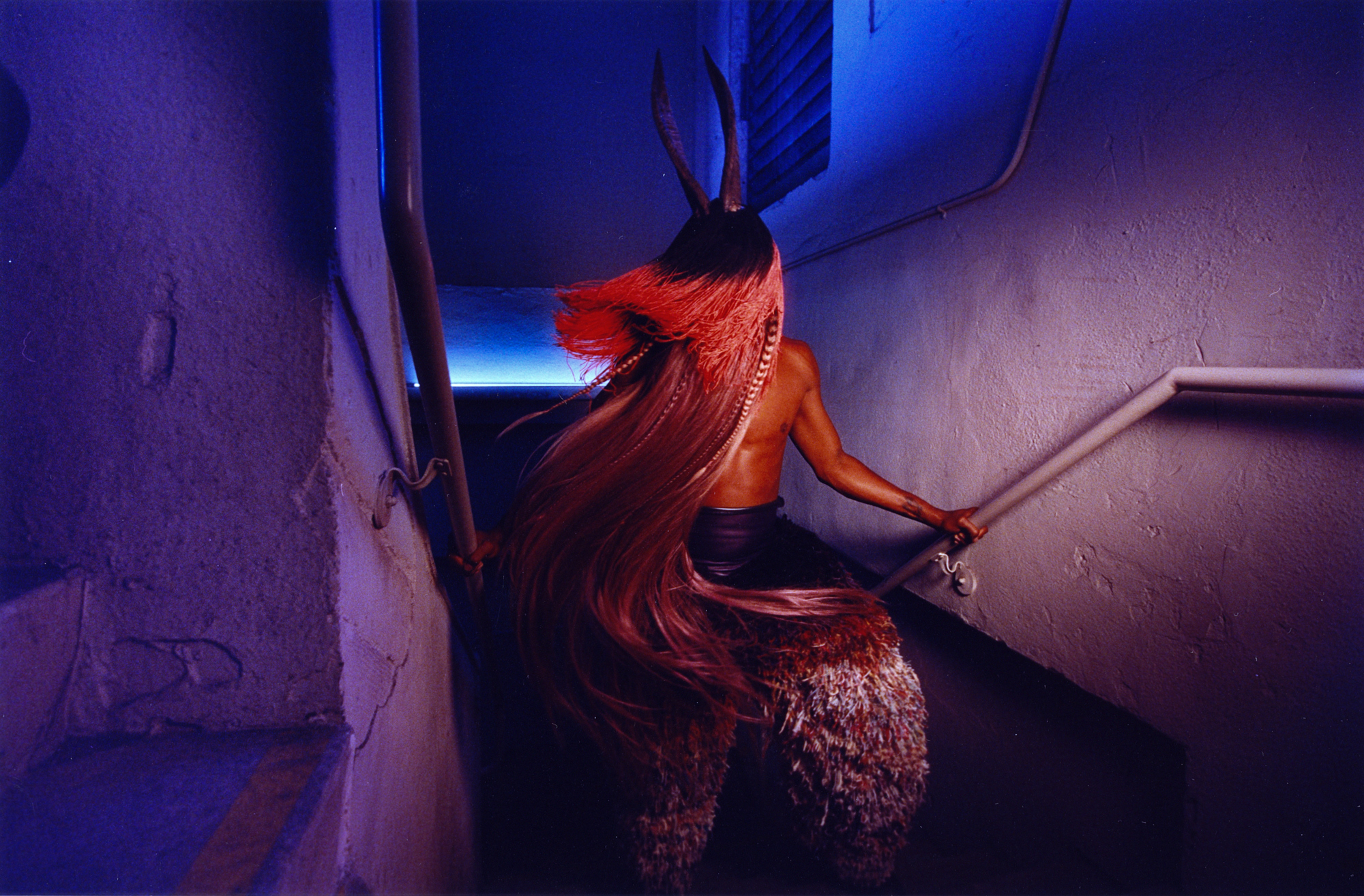
Is there anything else you can share about Planet City, the Getty PST exhibition, or upcoming projects?
I have been able to narrate and expand on Planet City in my recent TED talk, and we are also developing a series of narratives and characters set in the city in a new graphic novel and a TV series pitch.